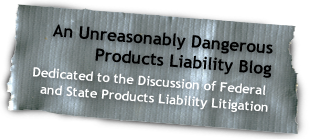Reptile Series Part 3 – Harness The Reptile And Use it To Your Advantage
In our most recent Reptile posts, we introduced a simple, proposed strategy for defense lawyers to deal with the Reptile, and introduced step 1 of the process. The following is step 2 of the proposed plan:
- HARNESS THE REPTILE AND USE IT TO YOUR ADVANTAGE
As set forth in our prior posts, the effectiveness of the reptile strategy lies in its ability to simplify the message and convey it to jurors in a form that they can understand and care about. The defense bar tends to overcomplicate everything. Typically, defense lawyers feel the need to provide way too much detail. If the simple message is effective, why not simplify the message? I would argue that the reptile strategy can be used by defense lawyers to simplify the message and to make jurors care about the defense’s case.
This proposed strategy works best in situations where the defendant has asserted an affirmative defense such as contributory negligence or misuse of a product. The reptile strategy can be used to establish safety rules that the plaintiff must follow, and the consequences to the plaintiff and the public of not following those safety rules. For example, the defense counsel can establish that warnings and instructions are provided not only to protect the plaintiff, but members of the general public who may be in the vicinity of the plaintiff while the product is being used.
Consider the following line of questioning:
- Plaintiff, you would agree that manufacturers provide warnings and instructions pertaining to the proper and safe use of their products?
- And you would agree that a user of a product must read and follow the warnings and instructions provided by the manufacturer?
- And one of the reasons you must read and follow safety instructions is so that you will protect yourself?
- And when you use this product, there could be members of the public in the vicinity? And another reason you would of course want to follow the safety information provided by the manufacturer is to avoid endangering members of the public who may be in the vicinity?
- So you would agree with me that when the user of a product fails to read and follow safety instructions, he could endanger not only himself, but members of the public who may be in the vicinity?
The line of questioning would then proceed through getting the plaintiff to agree that owner’s manuals and warning stickers are the type of safety information about which he was questioned earlier, and which he agreed must be read and followed. This strategy not only simplifies the information provided by the manufacturer by grouping it all into the category of safety information, but it establishes for the jury that the instructions are there to protect the plaintiff and members of the general public. Therefore, when the plaintiff fails to follow the safety information provided by the manufacturer, he endangers not only himself but members of the general public. The result is that the message is simplified, the consequences of the plaintiff’s conduct are of interest to jurors, and the reptile is harnessed.
Please feel free to reach out directly with any thoughts on this strategy, or leave thoughts in the comments section.















